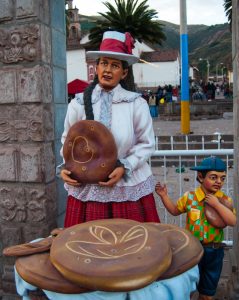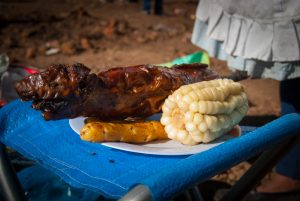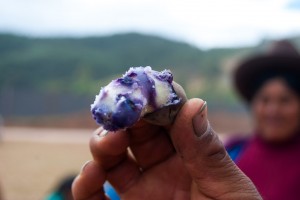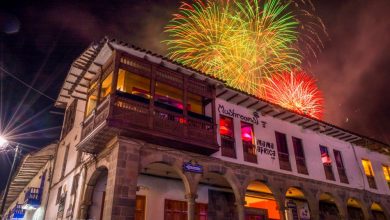Drink My Love, Cariño and Values in Cuzco

The people of Cuzco rely on a key value to guide themselves, especially as they interact with other people. It is the measure of a good relationship as well as a critique when things go wrong. As such, it is something people from outside can look at to help them make sense of how the people of Cuzco treat them and others. That value is cariño.
There is no way to say this word exactly in English, but that just shows how important the word is in local culture. In English, human life is just evaluated a bit differently.
Cariño can be defined as the expression of warmth, appreciation, love, and commitment between people who matter to each other, as well as everything around one. While the English sounds like a feeling one has inside, to the people of Cuzco, the expression, the way the feelings become public, is what is important.
People pay close attention to each other’s expression of warmth and affection, because it lets them know what kind of person the other is and how he feels about them.
For Andeans, the heart is very important. You feel things there, the sonqo in Quechua, and then express them. Your sonqo becomes known through your expression of it in actions.

Cariño is made tangible in greetings, the words, gestures, and enthusiasm with which you say hello, as well as in visiting each other, especially with gifts in your hands. As they say here, “you should never go with your hands empty.” It is also in the way people answer you, receive you, and what they then give you. They may invite you in, offer you a seat, and then bring you something to eat. All of these are demonstrations of cariño and are seen as very important.
Both sides are important and together express another important value, ayni or reciprocity. I give you my expression and you give me your expression. Together they are a model of social life in Cuzco.
Another important word here is abundancia, or abundance. People can see how much cariño you have for them by how abundant your offerings to them are, especially in important times, such as on birthdays and feast days. For example, a glass of beer is very different from a bottle, a case, or even ten cases. The art is in keeping the expression in tune with the relationship and with the situation.

You can see the important of abundance in Cuzco’s pan chuta, or chuta bread. These are very large breads, that are slightly sweet and carry a mild flavor of aniseed. While regular breads are small, sufficient for a single serving, the chuta bread is extended and abundant. It goes beyond the norm, making it very good as a gift.
When people are chosen to head up a local feast, by taking the role of sponsor or by helping a friend with their sponsorship, a particular kind of bread is given as a symbol of the request and consequent obligation it entails. This bread is called pan jurqa, named after the obligation of feast sponsorship or jurqa. It has a large, round loaf with a slightly smaller loaf baked on it. The bread has two layers, just like the two parts of a social interaction or of an obligation between people.
Because a feast is made up of the cariño of the sponsors and friends, the feast itself becomes a model of abundance and, you can say, of society. Each gives a piece of their cariño. Together, they make up a large event filled with food, drink, music, dance, and–as a result–algarabía, or lots of noise and joy.
Not only is cariño important for feasting, it is the basis of all relationships among people, including those of business.

As a result, when people pay each other calls, or especially when they visit friends and relatives in other places, they take something to give them, to show them their cariño. Generally, they take food, especially kinds of food that are typical of the place one comes from, although people also take other gifts. As a result, among the most common of gifts one finds potatoes and corn, the staffs of Andean life.
If you travel from Cuzco to somewhere else, you are also likely to carry big, round loaves of chuta bread as well as rounds or squares of cheese. From Copacabana you probably will bring bags of oversized, popped corn. You can also take fruit.
You take the cariño of the place. Of course, this is also like the rural fairs or relationships where people exchange goods from different ecological zones.
This idea of cariño manifested in gifts and actions is not only the key for understanding how the people of Cuzco interact with each other and with foreigners, it is also important in their relationship with the earth and the cosmos.
The first of August is approaching. On that day and nearby days people make offerings of cariño to the earth in thanksgiving for what it gives them and to keep alive their relationship with the earth so they will receive abundance and protection in the next season from the earth.
People also give cariño to the hills, the apus, and huacas, as well as to the dead. Not only do they make offerings of food, they also give song, dance, alcohol, and attention. Even words asking for permission, or saying hello, are part of cariño to the land, the living people, and those passed on.
The things given to the earth are often small and unique, called taq’i. Though small, they carry the affection, love, and gratitude of people and then, the Pachamama (Mother Earth) returns them in abundance with the harvest or with the blessings of fortune in daily life.

As a result, among people there is a saying: “en lo poquito está el cariño.” This means: “even in small things is people’s cariño.” Not always do people have lots of goods to give and not always is it appropriate. As a result, even if you are on a bus and someone offers you some of their food, such as a piece of bread, in that is a lot of cariño, as well as a moral.
Recently, we visited the town of Oropesa, famous for its chuta bread, among other breads. It was the day of the patronal feast, although we did not know that when we turned off the highway towards the town. While we were walking around the square, that late afternoon, among knots of people drinking and eating a part of the feast–taking in the abundant cariño of the event, a man came up to David who stands out for being tall, balding, and blond.
He came up with a glass of beer in his hand and said “sirvase mi cariño”, “serve yourself some of my cariño.” David wanted to demure but the man was insistent and, when someone offers you their cariño, a rejection is felt deeply. As a result, David offered some of the beer to the earth and then downed the rest, thanking the man for his cariño towards a foreigner who was not from Oropesa.
Because of the importance of cariño in Cuzco and because other people, such as English speakers of other visitors to Cuzco, have different customs, the people of Cuzco often feel slighted in their interactions when cariño is not shown or is rejected. This is the case even though the people of Cuzco have a long history of interaction with foreigners.
You cannot stay in Cuzco long without feeling its people’s cariño. Indeed, cariño is one of their key values.




